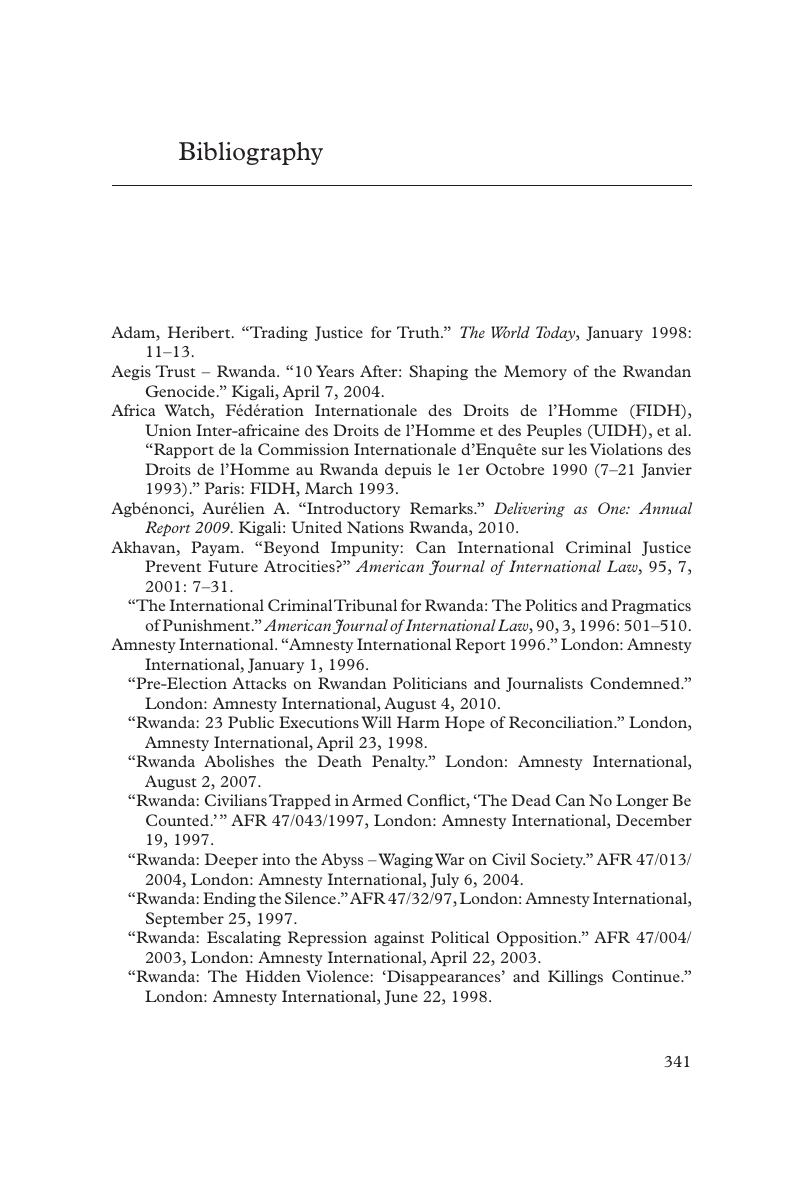Book contents
- Memory and Justice in Post-Genocide Rwanda
- Memory and Justice in Post-Genocide Rwanda
- Copyright page
- Dedication
- Dedication
- Frontispiece
- Contents
- Figures
- Acknowledgments
- Abbreviations
- 1 Introduction: The Meaning of Murambi
- Part I Creating What You Are Afraid of
- Part II Popular Narratives
- Part III Conclusion
- Bibliography
- Index
- References
Bibliography
Published online by Cambridge University Press: 30 August 2017
- Memory and Justice in Post-Genocide Rwanda
- Memory and Justice in Post-Genocide Rwanda
- Copyright page
- Dedication
- Dedication
- Frontispiece
- Contents
- Figures
- Acknowledgments
- Abbreviations
- 1 Introduction: The Meaning of Murambi
- Part I Creating What You Are Afraid of
- Part II Popular Narratives
- Part III Conclusion
- Bibliography
- Index
- References
Summary

- Type
- Chapter
- Information
- Memory and Justice in Post-Genocide Rwanda , pp. 341 - 364Publisher: Cambridge University PressPrint publication year: 2017



